This Just In: Samsung Droid Charge - The First Verizon 4G LTE Droid
by Brian Klug on May 3, 2011 1:25 AM EST- Posted in
- Smartphones
- Samsung
- Droid
- Verizon
- LTE
- 4G
- Droid Charge
- Mobile
This morning the Samsung Droid Charge arrived on our doorstep, and we've got a few initial impressions and some photos to tide you over until the full review. Last we saw the Droid Charge was at CES, where it was previously named the rather unassuming "Samsung 4G LTE Device."
The Droid Charge is built around a 1 GHz Hummingbird Samsung S5PC110 SoC with a PowerVR SGX540 GPU and 512 MB of RAM just like the original Galaxy S. Cellular connectivity is provided by a Qualcomm MDM9600 for both CDMA2000-1x, EVDO, and LTE. The Charge comes with a preinstalled 32 GB microSD card and 2 GB of internal NAND. The whole thing is topped off with a 4.3-inch Super AMOLED + display, which lacks the pentile subpixel grid and instead implements an RGB stripe. There's a front facing 1.3 MP camera, and rear facing 8 MP camera. Release date isn't quite nailed down for the Charge, but should be later this week. It's also running Android 2.2.1, not 2.3.x Gingerbread.
Physical impressions of the Charge are overall positive. It's nice to have physical android buttons, which are responsive and clicky if a bit oddly shaped. Likewise I'm actually impressed by how crisp the button clicks for volume and power are. It sounds inane, but this does really make up a significant portion of in-hand feel. The Droid Charge also feels much thinner in the hand than the HTC Thunderbolt we reviewed.
The back of the Droid Charge is unfortunately the same slippery glossy plastic that adorned a number of Galaxy S models and the Nexus S. In fact, the material appears very similar to the Nexus S. There's a lip at the bottom as well which definitely seems familiar. The slippery back material is gone in Samsung Galaxy S 2, which makes its continued presence here puzzling to me. There's a microUSB port on the left, microHDMI on the right.
I'm going to have to take another trip up to Phoenix, AZ to test LTE, so I don't have any impressions about connectivity outside EVDO. The Charge unsurprisingly does not support simultaneous 1x voice and EVDO data (SVDO), but should support 1x voice and 4G LTE data (SVLTE). This is all built around the same MDM9600 we've talked about extensively in both LTE pieces.
Probably the most notable new thing is the SAMOLED+ display, which again lacks a Pentile subpixel layout and instead implements an RGB stripe. Whites are still not entirely perfect at lower brightness settings, where they look somewhat yellow. At higher brightnesses, SAMOLED+ really shines.


Left: Samsung Galaxy S AMOLED display with Pentile, Right: SAMOLED+ with RGB stripe (photo taken at approximately the same magnification, color stripe is due to aliasing)
We've switched to using an XRite i1Pro spectroradiometer on loan from NEC for measuring any AMOLED device, and by the numbers the SAMOLED+ display on the Droid Charge is a little less radiant (258 nits vs 293 nits) than the AMOLED panel in the Galaxy S, but the white point is also better (8720K vs 9920K).
We'll have a full review up in the coming days (as soon as I can head to Phoenix and back for LTE testing), but until then we've put together a gallery with some photos of the Charge from all angles.


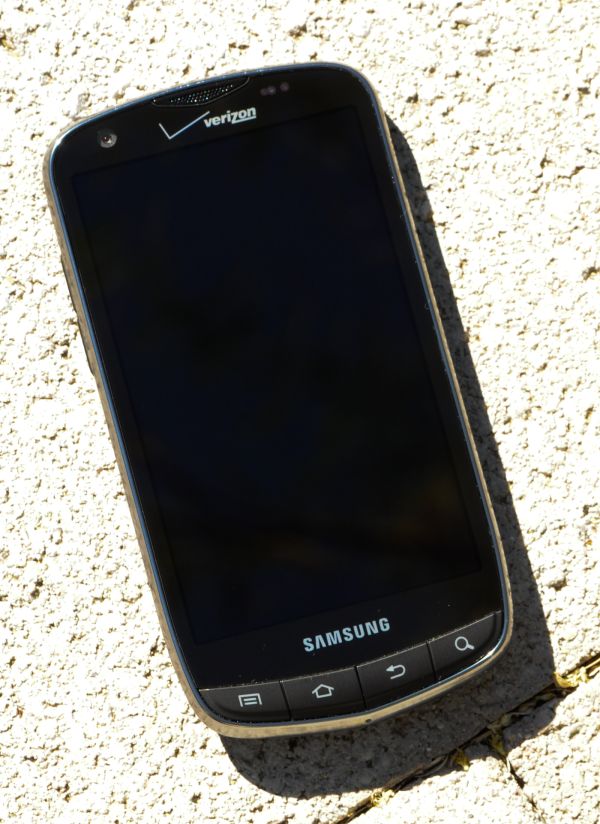
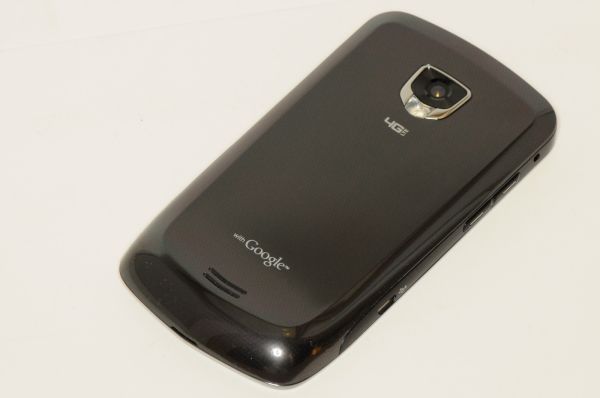
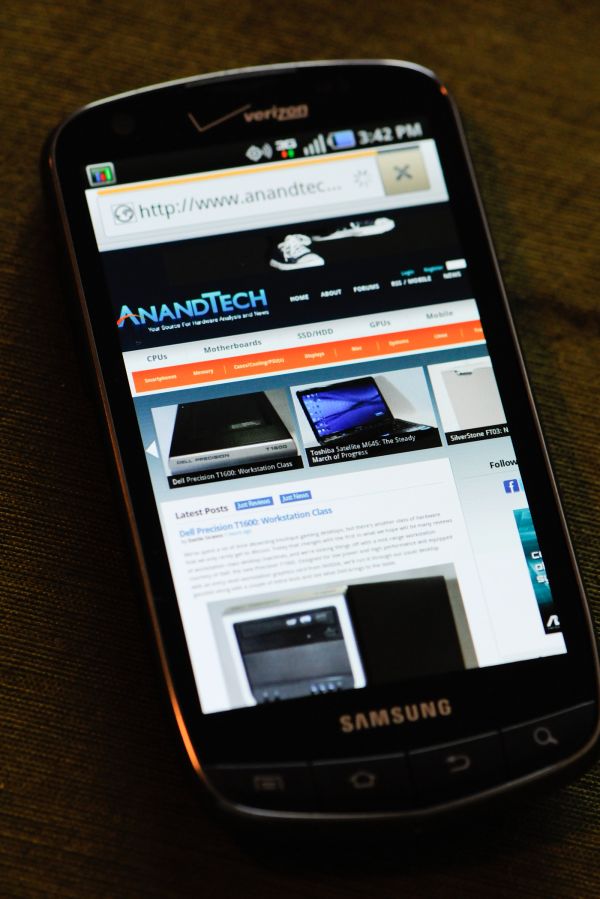
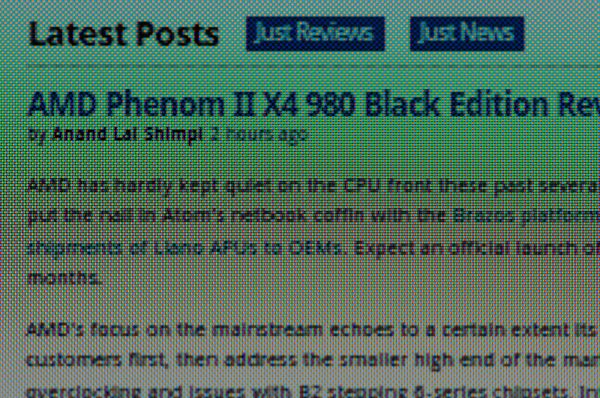
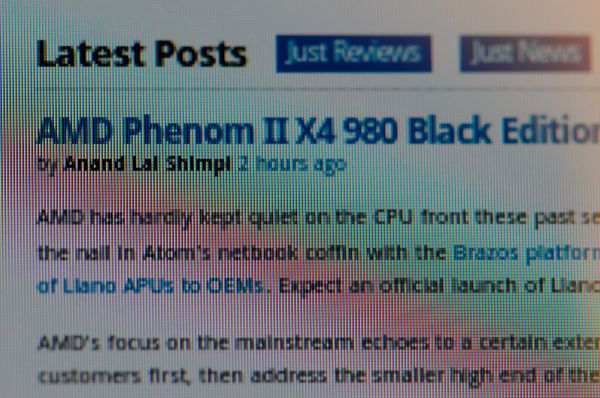














40 Comments
View All Comments
cmdrdredd - Tuesday, May 3, 2011 - link
It's bullshit...Droid is a proprietary name licensed from Lucas Film. It has NOTHING to do with the pjone, quality of the device, promotion of said device by verizon, or the price of tea in china.Brian Klug - Tuesday, May 3, 2011 - link
That's right - the Thunderbolt is the first Verizon LTE smartphone, the "Droid" Charge is the first official Droid tier LTE enabled smartphone.It's just a subtle point that's interesting to me since arguably the Thunderbolt should have been a Droid level phone. Verizon probably sees the Charge as being a better phone all around due to the SAMOLED+ display and smaller form factor, hence the Droid label. I'm intrigued by their selection criteria and why the Charge gets that branding instead of the Thunderbolt.
Note as well that the LG Revolution hasn't been quite branded a "Droid" either, though the Bionic has.
-Brian
Conficio - Tuesday, May 3, 2011 - link
Hi Brian,thanks for bringing us so many interesting tests. However, I'd like to encourage you to find a better photo location. The photos on the white stone surface in bright sunlight are washed out and lack detail. Better take an umbrella to shield against the bright light or take the photos at dawn when the place is in shade.
Kind regards,
Kaj
Brian Klug - Tuesday, May 3, 2011 - link
Kaj,I actually couldn't agree more - I'm in the process of moving and had to take down my lightbox and photo equipment the day it came in. I thought I'd shoot outside because of the lighting situation indoors being so bad (without flashes, softbox, e.t.c.).
It'll get better in a few days ;)
-Brian
DocB - Tuesday, May 3, 2011 - link
Any comparison to the upcoming LG droid?cmdrdredd - Tuesday, May 3, 2011 - link
It looks like Samsung brought out another phone that is too fat to begin with.weiln - Tuesday, May 3, 2011 - link
Brian,If the Charge only has a single MDM9600, how can it handle multiple connections? The Thunderbolt has two chips that can handle CDMA (MSM8655 and MDM9600) which allows for simultaneous Voice/Data over both CDMA/LTE, however the Charge only has one chip. Can the MDM9600 handle both LTE and CDMA simultaneously? I tried a brief search but couldn't find any information like this.
Previously voice/data was only available with wifi because it was a separate chip, and likewise the Thunderbolt has two chips...so I was just curious how the MDM9600 can handle multiple connections simultaneously with one chip.
I know voice/data doesn't sound like a big deal...but when I'm streaming a game, or downloading data, it's supremely irritating to keep getting text messages that interrupt.
Nathan
RicheemxX - Tuesday, May 3, 2011 - link
I was really curious about that one as well?? I can't seem to find anything that confirms the phone does simultaneous voice and data.Brian Klug - Tuesday, May 3, 2011 - link
Nathan,That's exactly correct, as we outlined in the Thunderbolt piece. So the Charge has an MDM9600 which apparently can indeed simultaneously tune 4G LTE on 700 MHz and 1xEVDO (either 1x or EVDO) on CDMA2000.
I've seen it documented a few places that the Charge does indeed support simultaneous voice and data but only in 4G markets, for example Amazon Wireless: "With 4G LTE, you'll enjoy simultaneous voice and data capabilities, allowing you to check e-mail, browse the web, download an app, and check directions on Google Maps while on a call" - http://wireless.amazon.com/Samsung-DROID-Android-V...
There were some leaked slides as well which were Verizon internal that noted the same thing, simultaneous voice and data but when you're in a 4G LTE market.
We're going to thoroughly test that out ;)
-Brian
sooper_anandtech12 - Tuesday, May 3, 2011 - link
I don't know why people feel that these PenTile displays are worth their hard earned cash. First, it was the Nexus 1. Slews of owners came out to defend their device's display. Then the Galaxy S came out, and again, owners backed the AMOLED display with PenTile pixel structure. Now, Atrix owners touting their qHD displays, again sporting PenTile architecture. Samsung has openly come out and denounced their past practices and come out with a normal RGB set up with the sA+ displays. Why do people still support these PenTile devices? Stop buying them and send a message to OEMs that it's just not acceptable. The qHD display on the Atrix is plan horrible. The pixelation above is obvious with plain sight.